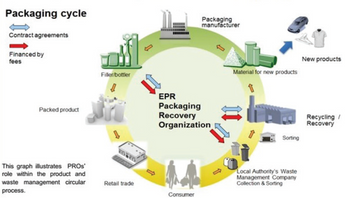Vacuum Coating Process Solutions for Added Value Packaging Performance
Presented by Carolin Struller, Bobst Manchester
Performance requirements and expectations for metallized polymer films have become more demanding and challenging over the last decade, especially with the added drive towards sustainability and target of cost reduction via downgauging and packaging structure simplification. With the work presented here, different roll-to-roll vacuum coating process technologies will be discussed, which address the growing needs of the packaging market and can significantly enhance packaging material functionality.
The presentation will give an overview of industrial vacuum coating process solutions used to produce transparent as well as opaque/metallized barrier coatings predominantly for packaging applications. When looking at transparent barrier layers, plasma enhanced chemical vapour deposition (PECVD) for the production of silicon oxide (SiOx) layers is an option as well reactive evaporation on a boat-type metallizer for the deposition of aluminium oxide (AlOx) coatings. Whilst the former offers a very durable coating, the latter makes use of a high-speed and hence low-cost deposition technology to produce very thin but high-performing layers. For the opaque metallized process solutions, the focus will also be on two of our process technologies, namely DarkNight and AluBond. DarkNight is a process solution which through a combination of consumables and machine optimisation offers low defect metallization with enhanced barrier performance and improved optical appearance. AluBond process technology on the other hand addresses several current market needs via enhancing metal bond strength on a variety of polymer film types and, moreover, through improving barrier properties and dyne level retention on metallized polyolefin type substrates.
In addition to discussing the process solutions in detail, this presentation will also give an insight into the process performance parameters critical for packaging applications, such as barrier, adhesion and dyne level retention.
This post is for paying members only
SubscribeAlready have an account? Log in

